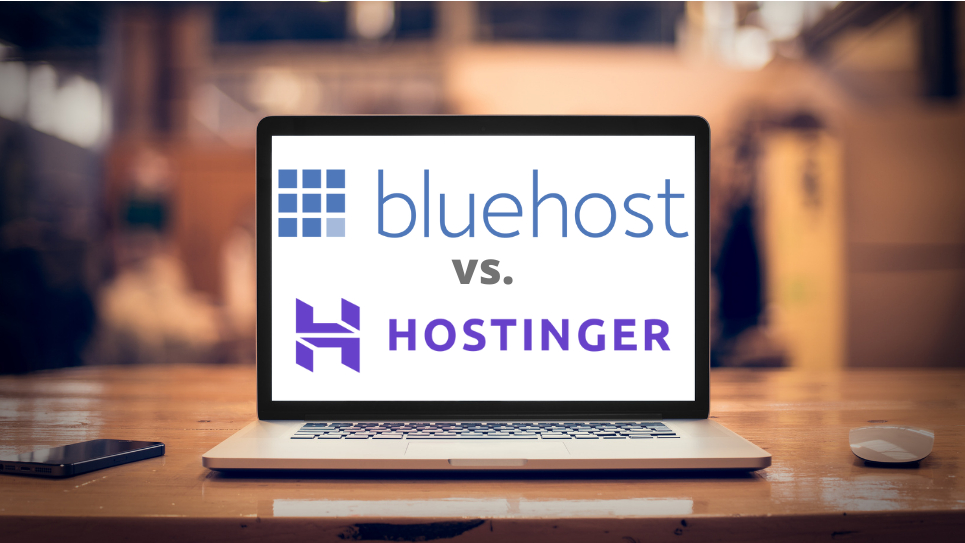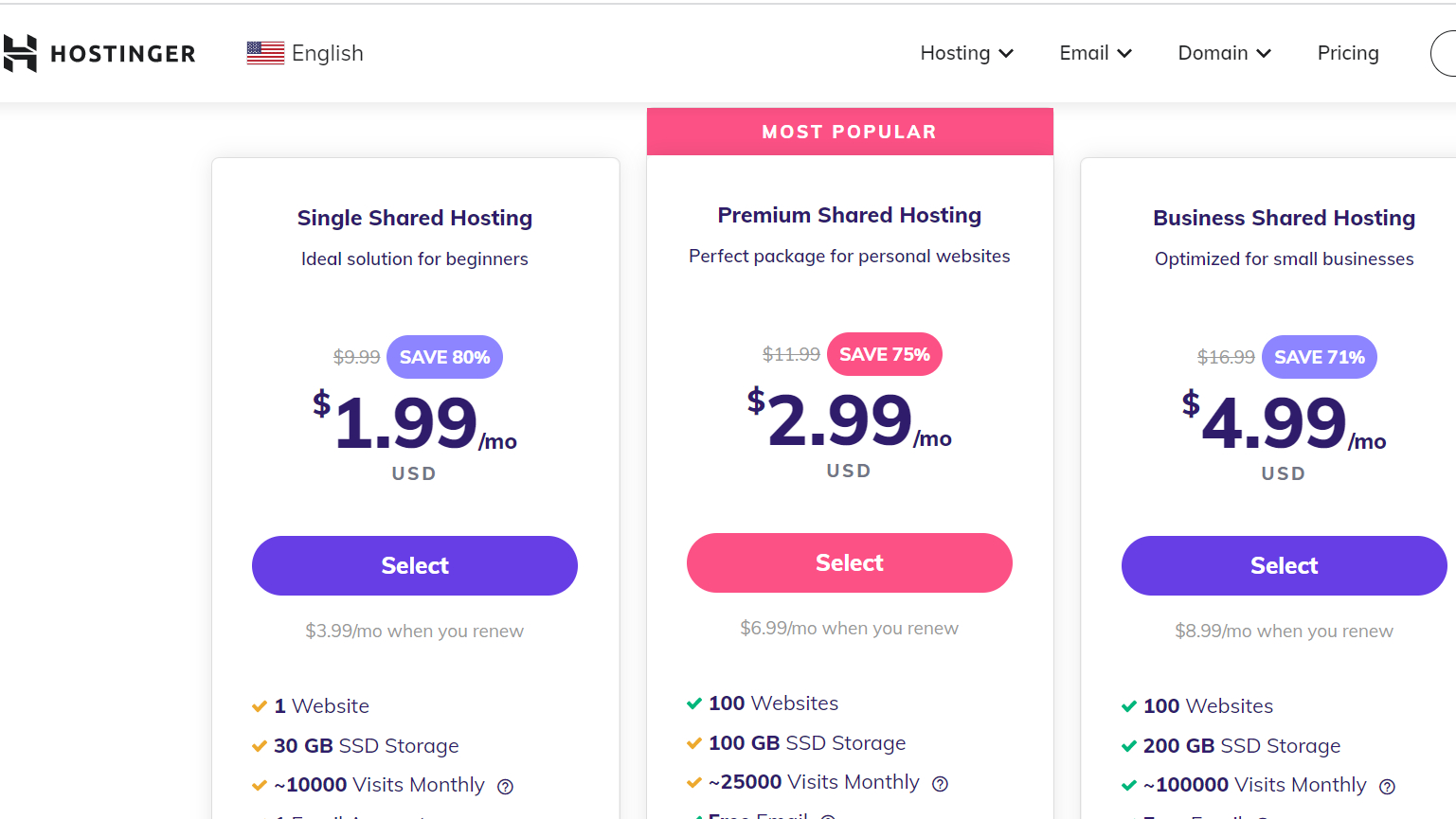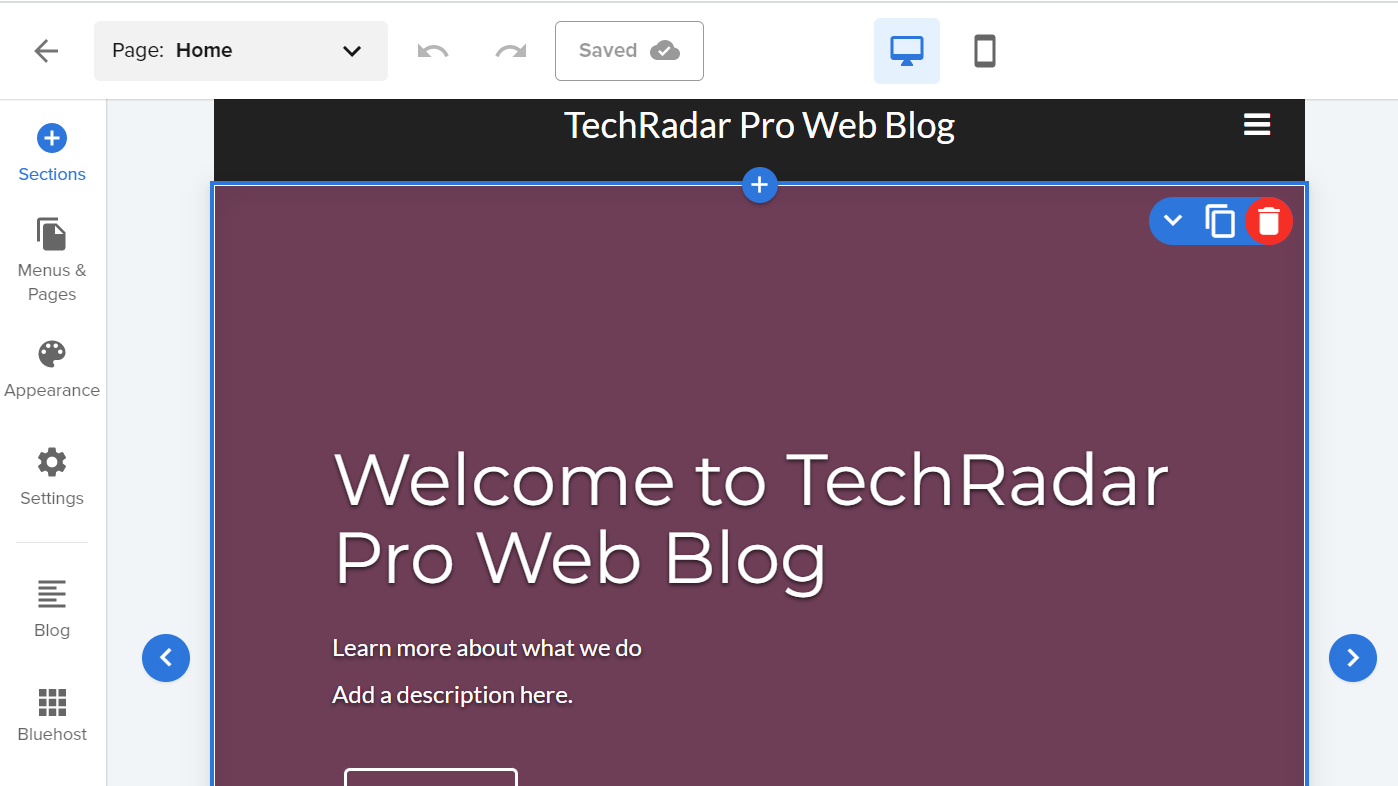Bluehost vs Hostinger: Which web host do experts recommend?
Pick the right web hosting service for you

Whether you’re kicking off your first start-up, searching for a way to shift your business online, or simply looking to swap your current host for a better one, choosing the right web hosting provider is critical for the success of your business.
If you’re on the lookout for a pocket-friendly yet powerful solution, you probably came across Bluehost and Hostinger already, and for all the right reasons. Both hosts managed to stay beginner-friendly while offering a wide variety of hosting options, features, and available apps. However, while these hosts are similar, they’re not quite the same.
That’s why we’re going to explore the similarities and differences between these hosts with an emphasis on features, ease of use, performance, customer support, and pricing.
So, if you’re still struggling to make a choice between Bluehost and Hostinger, stick with us. By the end of this comparison, you should have a clear idea of which of these hosts is the right choice for you and your business.
Main similarities and differences
While both Hostinger and Bluehost are particularly popular choices, the latter has been around the block for almost two decades, establishing itself as one of the biggest names in the web hosting industry and home to more than two million domain names.
Hostinger, on the other hand, started its journey as Hosting Media, rebranding itself to Hostinger in 2011, so while its story is a story of success, it lacks the long track record that Bluehost has.
Today, Bluehost is mostly popular for its WordPress-specific packages filled with business features, while Hostinger puts focus on being as cheap and cheerful as one can get without compromising the overall performance.
Also, while both hosts offer some superb entry-level solutions geared toward newcomers, Bluehost comes slightly stronger when it comes to customer support, so if that’s one of your top priorities – pick out Bluehost.
If you don’t mind finding your way around without a committed customer support staff available via telephone line and plan to rely on step-by-step guides, Hostinger might be a better bet.

Pricing
Since entry-level, shared hosting packages are pretty much the most popular choice for users that are just starting out, let’s start with that. Bluehost currently offers four shared hosting packages, while Hostinger offers three – and both of them come with add-ons and certain customizations that can be requested.
The most budget-friendly choice with Bluehost is a shared hosting plan called “Basic” and for $2.74 (€2.64) per month (on annual billing) it will get you a single site, 50 GB of SSD storage, custom WordPress themes, a free domain for a year, and a 24/7 customer support.
You can save on your Bluehost subscription with our Bluehost promo codes.
On the downside, only two billing cycles are available (every 12 or every 36 months), so if you hoped to get a monthly plan – tough luck. Also, after the promotional period comes to an end, the significant price spike might catch you off guard – it’s a steep $9.25 (€8.92) per month.
With Hostinger, you can get a single site, 30GB of SSD storage, up to 10000 visits per month, one e-mail account, two databases, two subdomains, a free SSL certificate, Cloudflare DNS firewall, and a 24/7/365 customer support for $3.49 (€3.35) per month (on annual billing).
Grab a bargain on your Hostinger subscription with our Hostinger promo codes.
However, if you commit for four years you can drop the cost to $1.99 (€1.90), which is the most budget-friendly option up here. Even with the promotional period reaching its end, the price will spike to $3.99 (€3.85) – significantly lower than with Bluehost.
So, if you’re working on a tight budget, Hostinger might be a better choice than Bluehost, both in short-term and long-term planning. However, while these hosts slightly differ in terms of features, we have a tied score when it comes to value for money.
Hosting services comparison
While both Bluehost and Hostinger offer shared hosting, WordPress-specific hosting (managed and unmanaged), VPS hosting, and ecommerce hosting, Hostinger also provides cloud hosting solutions, while Bluehost doesn’t.
We should also note that with Hostinger, you can get Windows VPS hosting, while with Bluehost it’s Linux or nothing. However, since Linux hosting is a more popular choice anyway, this isn’t going to be a deal-breaker for most, but those who want to utilize specific Windows applications will think otherwise.
Also, if you’re thinking about upgrading your business with a dedicated server, you’ll have to go with Bluehost, since Hostinger doesn’t provide dedicated hosting.
All in all, although Hostinger offers a few more options, if you’re not interested in cloud or Windows hosting, it won’t matter much to you.

Website builder offering
For those who aren’t particularly tech-savvy or don’t have sufficient time to build their site from scratch, both Bluehost and Hostinger offer easy-to-use website builder services.
With Bluehost, you’ll get a beginner-friendly, WordPress website builder that’ll make creating a professional-looking WordPress site both swift and simple. It features an intuitive interface, a drag-and-drop functionality, and tons of templates.
Hostinger's site builder of choice is Zyro and it covers all the essentials with over 200 mobile-responsive templates, simple drag-and-drop customizations, and an ability to attach videos, maps, social media widgets, and basic ecommerce functionality.
If you want a budget-conscious solution, Zyro’s entry-level plans might be a perfect fit. On the other hand, if you’re looking for a more scalable, customizable, and long-term solution – go with Bluehost.
Speed/uptime/server location
If speed is what you need, Hostinger might be a smarter choice, especially if you’re planning to create a WordPress site. This is because Hostinger supports the LiteSpeed WordPress module on its latest cloud Linux server platform to improve speed, stability, and uptime. Its hosting solutions also include an optional Cloudflare CDN that won’t only boost the speed but also protect the site from DDoS attacks.
As expected, Hostinger provides all its users with a 99.9% uptime guarantee, which is a bit low (we wanted to see 99.98% at least) but a lot better than not offering an uptime guarantee at all, like Bluehost.
Hostinger’s primary data center is situated in Kaunas (Lithuania), but it also owns servers across Europe (the UK, the Netherlands, and Lithuania), Asia (Singapore, India), North America (the USA), and South America (Brazil).
All Bluehost’s servers are located in the USA, with the primary data center based in Orem (Utah, the USA).
Ease of use and performance
Both Bluehost and Hostinger are easy to get to grips with thanks to an intuitive sign-up process, a simple-to-use dashboard, a convenient control panel, one-click installs, a WordPress-friendly approach, and drag-and-drop, site-building software.
While Bluehost chose to integrate industry-leading, Linux-based cPanel, Hostinger came up with its own control panel called hPanel – and surprise, surprise, it’s as user-friendly as cPanel.
When it comes to overall performance, while both hosts are pretty powerful, due to the sheer amount of available server locations you can expect faster speed with Hostinger. However, if you and your intended audience are from the USA, it’s a tie.
Customer support
In terms of customer support, Bluehost has a stronger start than Hostinger thanks to providing more support channels users can choose from.
These include telephone support, 24/7 live chat, a FAQ section, and a knowledgebase packed with how-tos, video guides, and easy-to-follow guidelines.
On the other hand, with Hostinger you’ll get 24/7 live chat, email support, and a comprehensive knowledgebase – with no telephone support, however.
Both hosts offer enthusiastically updated blogs where you’ll find tons of helpful tips and tricks.
Which host wins?
While Bluehost and Hostinger have a lot to offer, both have their own strengths and weaknesses.
With Bluehost, you can expect to get a grand user experience, excellent uptime, a greater amount of resources (storage, bandwidth, and sites), a stronger emphasis on WordPress, and more support channels.
At the same time, Hostinger is more pocket-friendly than its competitor - particularly with a long-term commitment. It also offers a wider variety of hosting services and a more powerful performance backed by a 99.9% uptime guarantee.
Thankfully, both hosts offer a 30-day money-back guarantee, which means you can try everything out for yourself without blowing your budget.
Are you a pro? Subscribe to our newsletter
Sign up to the TechRadar Pro newsletter to get all the top news, opinion, features and guidance your business needs to succeed!
Mirza Bahic is a freelance tech journalist and blogger from Sarajevo, Bosnia and Herzegovina. For the past four years, Mirza has been ghostwriting for a number of tech start-ups from various industries, including cloud, retail and B2B technology.